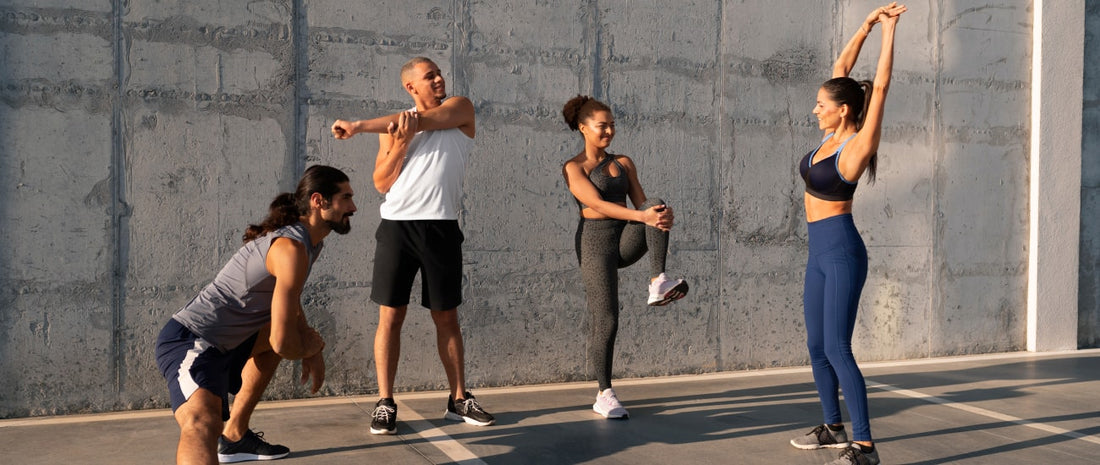
Improve Your Workout - Add Some "Leverage"
It was Archimedes who said, “Give me a lever long enough and a fulcrum on which to place it, and I shall move the world.”
While exercising and trying to shed pounds might not seem like a momentous challenge compared to moving the planet, both scenarios can get a boost from adding a bit of leverage to the process.
As a follow-up to an earlier HealFast Health and Wellness post regarding some simple tips to drastically increase the results of your work out, I wanted to discuss the importance of leverage in lifting along with some simple examples. The below are simple and common applications of leverage, but once you get the right frame of mind you will begin leveraging its benefits in all of your exercises.
Before we get into the specific examples below, I wanted to define how leverage works generally when it comes to lifting to help set the mindset for how you can identify other applications in your workout routine. In simplest terms, think of your arms and joints as levers and fulcrum points respectfully, for example where the elbow attaches to the upper arm via a ligament. Unfortunately for modern man, the tendon connections points from the bicep to the forearm are very close to the joints. Thus, the bicep tendon needs to work harder to lift the forearm than if the tendon was attached closer to the mid-forearm (think of a chimpanzee’s arm).

Now how do we use this to our advantage to get a more solid work out? Ensure the positioning of the weight, using your form, is such that it creates a maximum opposing force against your muscle for any given weight. So, let’s get into some examples using common exercises below.
Abs: When doing abdominal workouts, consider extending your hands and arms out above your head. The further above your head you can reach and straighten the arms the better. In general, your upper body acts as a lever here with the majority of concentrated weight out on the end (i.e. your head). By extending your arms above your head you are also adding weight further from the axis of movement. Since there is less leverage on the side doing the work (i.e. the abs pulling on the hips) for now a longer upper body portion the exercise is more difficult for the same weight. I also advise doing these inverted for a more intense work out throughout the entire rep as well. But take it slow!
Biceps: Similar to the image above and the previous discussion regarding the chimp’s arm, we can take advantage of leverage for bicep curls. I advise take use of an adjustable bench and setting the backrest to an angle you would use for incline bench press. Take two dumbbells and lay back, it might help to adjust the seat to an inclined angle as well. Now let your arms hang down the full length and focus only on bringing the weight from a fully open-arm extending position up to about the chest/nipple area.
There is no need to bring the weight all the way up to the shoulder and the elbow should not move from the original position throughout the rep. In fact, moving the elbow forward when the weight attempts to reach the shoulder will take a load off the bicep muscle and place it on the shoulder.
Note: This can be a very intense workout and going lighter is advisable. If you suffer from tendonitis this may overload the tendon if you are not used to the exercise. Remember as a general note that smaller muscles can handle/require “proportionally large” weights to their size (i.e. legs can handle anything but with arms sometimes less is more).
Squats/Lunges: Squatting is a relatively simple concept to get and you have probably heard many people say “try not to let your knees bend over your toes”. This is so that like with the bicep, the weight is distributed done the spine and out the butt, and when you squat down the weight is furthest out from the bending axis as possible. This is also important for ensuring the weight is down and along the back and does entice the lifter to bend forward potentially shifting weight all on the lower back. To achieve this proper form, I often suggest mentally telling yourself to scoot your butt out first and then bend at the knees. I do this so I don’t get the feeling I am falling backward (scary stuff!). Always remember to keep your head up and looking up at the ceiling for balance, use your head as a counterweight. Keep your eyes down at the mirror to check your form.
Stretches: I will be brief here, just like with the ab routine extending your arms out at certain angles or in certain poses can help add more leverage on the muscles, ligaments, and tendons when stretching. For example, bending at the hips to stretch the hamstrings, keep your back and shoulders straight/flush, and for even more added torque extend your arms outward. You will feel the difference.
So, get out there, take it slow, and mix it up! Get strong enough to move the world (or at least your personal portion of it!) Looking forward to seeing some new Atlases out there.
I hope you enjoyed this post and if so, feel free to comment and add questions below. Make sure to sign up to our Facebook and Twitter accounts for new releases and share with family and loved ones! As always, until the next post, stay informed and be healthy!
















